Introduction

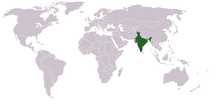
India, officially the Republic of India (ISO: Bhārat Gaṇarājya), is a country in South Asia. It is the seventh-largest country by area; the most populous country as of June 2023; and from the time of its independence in 1947, the world's most populous democracy. Bounded by the Indian Ocean on the south, the Arabian Sea on the southwest, and the Bay of Bengal on the southeast, it shares land borders with Pakistan to the west; China, Nepal, and Bhutan to the north; and Bangladesh and Myanmar to the east. In the Indian Ocean, India is in the vicinity of Sri Lanka and the Maldives; its Andaman and Nicobar Islands share a maritime border with Thailand, Myanmar, and Indonesia. (Full article...)
Selected pictures
Giani Zail Singh (pronunciation, born Jarnail Singh; 5 May 1916 – 25 December 1994) was an Indian politician from Punjab who served as the seventh president of India from 1982 to 1987 and 9th Chief Minister of Punjab. He was the first Sikh to become president.
Born in Sandhwan in the princely state of Faridkot, Singh trained to be a granthi and was given the title of giani, meaning a learned man, while training at the Sikh Missionary School in Amritsar. Singh was associated with peasant agitations and the movement seeking a representative government in Faridkot. His political activism in the Praja Mandal, an organisation allied with the Indian National Congress, saw him sentenced to solitary confinement between 1938 and 1943. He led a flag satyagraha and formed a parallel government in Faridkot State which were called off only after the intervention of Jawaharlal Nehru and Vallabhbhai Patel. The stints in jail inspired him to change his name to Zail Singh. (Full article...)
Two major versions of its manuscripts are known. One has fifteen verses but attached to Atharvaveda, while another very different and augmented manuscript exists in the Telugu language which has one hundred and forty two verses and is attached to the Krishna Yajurveda. The text is notable for describing Yoga in the Vaishnavism tradition. (Full article...)

The Kandariya Mahadeva Temple (Devanagari: कंदारिया महादेव मंदिर, Kandāriyā Mahādeva Mandir), meaning "the Great God of the Cave", is the largest and most ornate Hindu temple in the medieval temple group found at Khajuraho in Madhya Pradesh, India. It is considered one of the best examples of temples preserved from the medieval period in India. Because of its outstanding preservation and testimony to the Chandela culture, the temple was inscribed on the UNESCO World Heritage List in 1986. (Full article...)
Mohandas Karamchand Gandhi (ISO: Mōhanadāsa Karamacaṁda Gāṁdhī; 2 October 1869 – 30 January 1948) was an Indian lawyer, anti-colonial nationalist and political ethicist who employed nonviolent resistance to lead the successful campaign for India's independence from British rule. He inspired movements for civil rights and freedom across the world. The honorific Mahātmā (from Sanskrit 'great-souled, venerable'), first applied to him in South Africa in 1914, is now used throughout the world.
Born and raised in a Hindu family in coastal Gujarat, Gandhi trained in the law at the Inner Temple in London and was called to the bar in June 1891, at the age of 22. After two uncertain years in India, where he was unable to start a successful law practice, Gandhi moved to South Africa in 1893 to represent an Indian merchant in a lawsuit. He went on to live in South Africa for 21 years. There, Gandhi raised a family and first employed nonviolent resistance in a campaign for civil rights. In 1915, aged 45, he returned to India and soon set about organising peasants, farmers, and urban labourers to protest against discrimination and excessive land-tax. (Full article...)
Baghban was conceived by producer and co-writer B. R. Chopra during his 1960s trip across Europe, when he visited a retirement home and was inspired by the householders' story. It was inspired by a Marathi movie "Tu Tithe Mi" by Smita Talwalkar. In one of the interview it was told that, special screening was set for Mr. Bachchan for the Marathi movie Tu Tithe Mi, later the movie was remade in Hindi as Baghban. Although the screenplay was finished in 1973, Chopra did not begin production for decades because he was busy with other projects. After he revived it, principal photography began in July 2002 in Film City with cinematographer Barun Mukherjee. During post-production, it was edited by Shailendra Doke, Godfrey Gonsalves, and Shashi Mane. Baghban's soundtrack was composed by Aadesh Shrivastava and Uttam Singh, with lyrics by Sameer. (Full article...)

The Niedermayer–Hentig Expedition, also known as the Kabul Mission, was a diplomatic mission to Afghanistan sent by the Central Powers in 1915–1916. The purpose was to encourage Afghanistan to declare full independence from the British Empire, enter World War I on the side of the Central Powers, and attack British India. The expedition was part of the Hindu–German Conspiracy, a series of Indo-German efforts to provoke a nationalist revolution in India. Nominally headed by the exiled Indian prince Raja Mahendra Pratap, the expedition was a joint operation of Germany and Turkey and was led by the German Army officers Oskar Niedermayer and Werner Otto von Hentig. Other participants included members of an Indian nationalist organisation called the Berlin Committee, including Maulavi Barkatullah and Chempakaraman Pillai, while the Turks were represented by Kazim Bey, a close confidante of Enver Pasha.
Britain saw the expedition as a serious threat. Britain and its ally, the Russian Empire, unsuccessfully attempted to intercept it in Persia during the summer of 1915. Britain waged a covert intelligence and diplomatic offensive, including personal interventions by the Viceroy Lord Hardinge and King George V, to maintain Afghan neutrality. (Full article...)
Farhan Akhtar (born 9 January 1974) is an Indian actor, filmmaker and singer who works in Hindi films. Born to screenwriters Javed Akhtar and Honey Irani, he established the production company Excel Entertainment, along with Ritesh Sidhwani, in 1999.
Akhtar made his directorial debut with the coming-of-age film Dil Chahta Hai (2001), receiving critical acclaim for portraying realistic modern Indian youth, and winning the National Award for Best Hindi Film and the Filmfare Award for Best Film (Critics). He then directed the war film Lakshya (2004), the action thriller Don (2006) and its sequel Don 2 (2011). (Full article...)
Vicky Kaushal (pronounced [ˈʋɪkːi ˈkɔːʃəl]; born 16 May 1988) is an Indian actor who works in Hindi films. He is the recipient of numerous accolades, including a National Film Award and three Filmfare Awards, and has appeared in Forbes India's Celebrity 100 list of 2019.
After graduating with an engineering degree from Rajiv Gandhi Institute of Technology, Kaushal began his career by assisting Anurag Kashyap in the crime drama Gangs of Wasseypur (2012) and played minor roles in films. His first leading role was in the independent drama Masaan (2015), following which he starred in Kashyap's psychological thriller Raman Raghav 2.0 (2016). Kaushal gained wider recognition in 2018 with supporting roles in the top-grossing dramas Raazi and Sanju, winning the Filmfare Award for Best Supporting Actor for the latter. (Full article...)

Gujarati cinema, also known as Dhollywood, is the segment of Indian cinema, dedicated to the production of motion pictures in the Gujarati language widely spoken in the state of Gujarat. It is based in Ahmedabad. It is one of the major regional and vernacular film industries of the cinema of India, having produced more than one thousand films since its inception.
During the silent film era, many individuals in the industry were Gujaratis. The language-associated industry dates back to 1932, when the first Gujarati talkie, Narsinh Mehta, was released. Until the independence of India in 1947, only twelve Gujarati films were produced. There was a spurt in film production in the 1940s focused on saint, sati or dacoit stories as well as mythology and folktales. In the 1950s–1960s, the trend continued with the addition of films on literary works. In the 1970s, the Government of Gujarat announced a tax exemption and subsidies which resulted in an increase in the number of films, but the quality declined. (Full article...)
Sharma had long contemplated making a spy film but felt this was not economically viable for the Indian market because Indian films did not have sufficient budgets. He first planned a film about India's spy network set in the early 2000s but made the 2001 film Gadar: Ek Prem Katha, which became one of the highest-grossing Indian films of all time. Following the record-breaking success of that film, Sharma decided to make The Hero: Love Story of a Spy. The Shah Brothers were engaged to produce the film, which was touted to have a huge budget and scale, unlike previous Bollywood films. Aiming for high production values, a sizeable amount of money was spent on the film. Several large sets were created to give the film a feeling of grandeur, and international stunt experts were hired to coordinate action sequences new to Bollywood. Principal photography was done at Indian locations, including Kullu and Manali, and in locations in Canada and Switzerland. Uttam Singh composed the soundtrack with lyrics written by Anand Bakshi and Javed Akhtar. (Full article...)
Siddiqui studied philosophy at Aligarh Muslim University and later studied chemistry at Frankfurt University, where he received his PhD in 1927. On return to British India, he worked at the Tibbia College Delhi and the Indian Council for Scientific and Industrial Research. He later moved to Pakistan and worked in the Pakistan Council of Scientific and Industrial Research. He went on to establish the Pakistan National Science Council and was appointed its first chairman in 1961. In the same year he became a Fellow of the Royal Society. He later co-founded the Pakistan Academy of Sciences, and after retirement from the government, he founded the Hussain Ebrahim Jamal Research Institute of Chemistry. (Full article...)

The Chennai Metro is a rapid transit system serving the city of Chennai, India. Operated by Chennai Metro Rail Limited (CMRL) – a joint venture between the Government of India and the Government of Tamil Nadu, the network consists of two lines and spans 54.1 km (33.6 mi). The system uses standard gauge and has 41 underground and elevated stations.
Planning for the Metro started in 2007-08 with construction commencing in February 2009. After testing in 2014, the first segment of the metro between the Alandur and Koyambedu stations on the Green Line began operations on 29 June 2015. On 21 September 2016, operations on the Blue Line commenced between Chennai Airport and Little Mount. The underground stretch from AG-DMS to Washermanpet of Blue Line opened on 10 February 2019, completing phase 1 of the Metro. (Full article...)
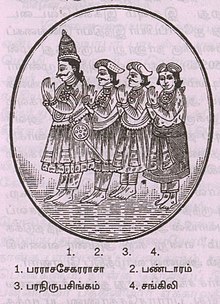
The Arya Chakravarti dynasty (Tamil: ஆரியச் சக்கரவர்த்திகள் வம்சம், Sinhalese: ආර්ය චක්රවර්තී රාජවංශය) were kings of the Jaffna Kingdom in Sri Lanka. The earliest Sri Lankan sources, between 1277 and 1283, mention a military leader of this name as a minister in the services of the Pandyan Empire; he raided the western Sri Lankan coast and took the politically significant relic of the Buddha's tooth from the Sinhalese capital city of Yapahuwa. Political and military leaders of the same family name left a number of inscriptions in the modern-day Tamil Nadu state, with dates ranging from 1272 to 1305, during the late Pandyan Empire. According to contemporary native literature, such as Cekaracecekaramalai, the family also claimed lineage from the Tamil Brahmins of the prominent Hindu pilgrimage temple of Rameswaram in the modern Ramanathapuram District of India. They ruled the Jaffna kingdom from the 13th until the 17th century, when the last of the dynasty, Cankili II, was ousted by the Portuguese. (Full article...)
Zafar conceived the film, which was the last to be narrated to founder Yash Chopra, as an amalgam of stories he had heard from his father as a child about the effects of war-caused immigration and the Mafia Raj's illegal marketing of coal. He wrote the film as a tale of the consequences of the struggle of two outlaws against the system, using his father's stories as a backdrop for the characters. Principal photography began in Mumbai in December 2012 before moving to Kolkata, where extensive filming was done. The soundtrack was composed by Sohail Sen, and the lyrics were penned by Irshad Kamil, while Julius Packiam composed the background score, taking over Sen's duties from Zafar's debut, Mere Brother Ki Dulhan, eventually becoming a regular collaborator. (Full article...)
Mangalore (/ˈmæŋɡəlɔːr, ˌmæŋɡəˈlɔːr/ MANG-gə-lor, -LOR), officially known as Mangaluru, is a major industrial port city in the Indian state of Karnataka and on the west coast of India. It is located between the Laccadive Sea and the Western Ghats about 352 km (219 mi) west of Bangalore, the state capital, 14 km north of Karnataka–Kerala border and 297 km south of Goa. Mangalore is the state's only city to have all four modes of transport—air, road, rail and sea. The population of the urban agglomeration was 619,664 national census of India. It is known for being one of the locations of the Indian strategic petroleum reserves.
The city developed as a port in the Laccadive Sea during ancient times, and after Independence a new port was constructed in 1968 and has since become a major port of India that handles 75 percent of India's coffee and cashew exports. It is also the country's seventh largest container port. Mangalore has been ruled by several major powers, including the Mauryan empire, Kadambas, Alupas, Vijayanagar Empire, and Keladi Nayaks. The city was a source of contention between the British and the Kingdom of Mysore rulers Hyder Ali and Tipu Sultan, and was eventually annexed by the British in 1799. Mangalore remained part of the Madras Presidency until India's independence in 1947 and was unified with Mysore State (now called Karnataka) in 1956. (Full article...)

Zakir Husain Khan (8 February 1897 – 3 May 1969) was an Indian educationist and politician who served as the third president of India from 13 May 1967 until his death on 3 May 1969.
Born in Hyderabad in an Afridi Pashtun family, Husain completed his schooling in Etawah and went on to study at the Muhammadan Anglo-Oriental College, Aligarh and the University of Berlin from where he obtained a doctoral degree in economics. A close associate of Mahatma Gandhi, Husain was a founding member of the Jamia Millia Islamia which was established as an independent national university in response to the Non-cooperation movement. He served as the university's vice-chancellor from 1926 to 1948. In 1937, Husain chaired the Basic National Education Committee which framed a new educational policy known as Nai Talim which emphasized free and compulsory education in the first language. He was opposed to the policy of separate electorates for Muslims and, in 1946, the Muslim League under Muhammad Ali Jinnah vetoed a proposal by the Indian National Congress to include Husain in the Interim Government of India. (Full article...)
The Arihant-class (transl. 'Slayer of Enemies' in Sanskrit) is a class of Indian nuclear-powered ballistic missile submarines being built for the Indian Navy. They were developed under the ₹900 billion (US$11 billion) Advanced Technology Vessel (ATV) project to design and build nuclear-powered submarines. These vessels are classified as 'strategic strike nuclear submarines' by India.
The lead vessel of the class, INS Arihant was laid down in 2004, launched in 2009 and after extensive sea trials was confirmed to be commissioned in August 2016.
Arihant holds the distinction of being the first ballistic missile submarine to have been built by a country other than one of the five permanent members of the United Nations Security Council. (Full article...)

Mysore Airport (IATA: MYQ, ICAO: VOMY), also known as Mandakalli Airport, is a domestic airport serving Mysore in Karnataka, India. It is located eight kilometres (5 mi) south of the city in the village of Mandakalli and is owned and operated by the Airports Authority of India. The Princely State of Mysore constructed it in 1940. The airport was later refurbished and inaugurated in May 2010. At present, it has direct flights to Chennai, Goa, and Hyderabad. (Full article...)

Dairy plays a significant part in numerous aspects of Indian society, including cuisine, religion, culture, and the economy.
India has the world's largest dairy herd with over 300 million bovines, producing over 187 million tonnes of milk. India is first among all countries in both production and consumption of milk. Most of the milk is domestically consumed, though a small fraction is also exported. Indian cuisine, in particular North Indian cuisine, features a number of dairy products like paneer, while South Indian cuisine uses more yoghurts and milk. Milk and dairy products play a part in Hindu religious practice and legend. (Full article...)
Payanangal Mudivathillai is Sundarrajan's directorial debut and the inaugural venture of Kovaithambi's Motherland Pictures. The film was produced by R. Elanchelian, Pollachi M. V. Rathinam and P. Muthusamy. Ilaiyaraaja composed the music and S. P. Balasubrahmanyam and S. Janaki performed the songs. Cinematography was handled by Kasthuri and the editing by R. Bhaskaran. (Full article...)

, there have been two Formula One drivers from India. Indian Formula One drivers have had a race entry to 59 Grands Prix. Across these Grands Prix, Indian Formula One drivers have accumulated 5 points between them. No Indian driver has taken a race win, podium, fastest lap or pole position.
Narain Karthikeyan made his debut in 2005 driving for Jordan. He would score 5 points at that year's United States Grand Prix. Karthikeyan would go on to race for HRT for two years from 2011; his Formula One career ended when HRT folded at the end of 2012. India's second driver, Karun Chandhok, made his debut in 2010 for HRT and would go on to drive for Lotus in 2011. (Full article...)
News
- 19 July 2024 –
- WazirX, an Indian cryptocurrency exchange owned by Binance, announces a security breach in which $234 million USD in cryptocurrency was stolen, amounting to half of the platform's total assets. (Business Standard)
- 18 July 2024 – Naxalite–Maoist insurgency
- Two Indian soldiers are killed and four others are injured in an IED attack by Maoists in Chhattisgarh, India. (The Hindustan Times) (India Blooms)
- 17 July 2024 –
- Comoros-flagged oil tanker Prestige Falcon capsizes off the coast of Oman. The Indian Navy rescues nine crew members, with seven others missing. (AP)
- 13 July 2024 –
- The Guardia di Finanza frees 33 Indian farm workers from exploitative conditions in Verona, Veneto, Italy, and seizes nearly €500,000 (US$545,000) from two Indian individuals accused of charging workers €17,000 ($18,500) each for permits. (AP)
- 8 July 2024 – India–Russia relations
- Indian Prime Minister Narendra Modi visits Moscow, Russia, for the first time since the start of the Russian invasion of Ukraine. (Al Jazeera)
Did you know...
- ... that Josephine Gates Kelly of the Standing Rock Reservation once hitchhiked to Washington, D.C., to protest portions of the Indian Reorganization Act?
- ... that deadly attacks from stray cows in India have become an electoral issue?
- ... that when visiting Britain during World War II, naval officer Kalyani Sen reported that Indian women were breaking down prejudices against men and women working together by joining the military?
- ... that in the 1932 baseball game in which pitcher Eddie Rommel won his last game, he pitched 17 innings in relief, an American League record?
- ... that Asha Sobhana is the first Indian player to take a five-wicket haul in the Women's Premier League?
- ... that an Indian rhinoceros, sent as a gift to Pope Leo X
Topics related to India
Timeline of Indian history, Indus Valley Civilisation, Dholavira, Science and technology in ancient India, Meluhha, Aryan invasion theory, Out of India theory, Greek conquests in India, Indian maritime history, Maurya Empire, Ashoka, Shunga Empire, Hoysala Empire, Vijayanagara, Satavahana dynasty, Indo-Greek Kingdom, Indo-Scythians, Indo-Parthian Kingdom, Kushan Empire, Western Satraps, Gupta Empire, Chola dynasty, Pala Empire, Islamic incursions in India, Mughal Empire, Maratha Empire, British Raj, East India Company, Governor-General, Viceroy, War of Independence, 1857, Indian independence movement, Indian National Army, Azad Hind, Quit India Movement, Partition of India, History of Republic of India, Non-Aligned Movement, Sino-Indian War, Indo-Pakistani War of 1947–1948, Indo-Pakistani War of 1965, Indo-Pakistani War of 1971, Kargil War, 2001–02 India–Pakistan standoff, Military, Demographic
Law, Hindu law, Constitution, Political parties (Indian National Congress, Bharatiya Janata Party), Foreign relations, Elections, Political divisions, Reservation in India
Government agencies, Legislative branch (Lok Sabha, Rajya Sabha) Executive branch (President & Vice President, Prime Minister & Deputy Prime Minister, Cabinet Ministers, Cabinet Secretary, Election Commission, Foreign Minister; Law enforcement: CBI, CID, Intelligence: IB, RAW), Directorate General of Income Tax Investigation Judicial branch (Supreme Court), Armed Forces (Army, Navy, Air Force, Border Security Force, Coast Guard)
Himalayas, Western Ghats, Eastern Ghats, Indo-Gangetic Plain, Deccan Plateau, Thar Desert, Ganges, Rann of Kutch, Brahmaputra River, Northeast India; Mountains, Valleys, Islands, Rivers; States and union territories, Cities, Districts, Regions, Fauna, Flora
Rupee, Bombay Stock Exchange, National Stock Exchange, Standard of living, Companies, Reserve Bank of India, Energy policy (Solar, Wind, Nuclear), Tourism, Transport (Expressways, Rail transport, Auto rickshaw),
Languages, Standard of living, Religion
Music (Carnatic, Hindustani, Indi-pop), Dance, Languages, Literature, Architecture, Film & TV, Cuisine, Holidays, Folklore, Education, Media, Indian martial arts
Indian Council of Agricultural Research (ICAR), Indian Institute of Astrophysics, National Centre for Software Technology, AIIMS, IISc, IIT, NIT, BITS-Pilani, INRegistry, Indian numbering system, Indian Space Research Organisation, National Internet Exchange of India, ICRISAT, International Institute of Information Technology, Hyderabad
Indian English, Indian nationality law, Numbering system, Indian Space Research Organisation, Telecommunications, National Highways Development Project, Flag, Vehicle registration plates, Indian nationalism, Metrication in India
Categories
Related portals
Religions in India
Indian Subcontinent
Other countries
Wikipedias in Indian languages
- অসমীয়া (Assamese)
- বাংলা (Bengali)
- भोजपुरी (Bhojpuri)
- বিষ্ণুপ্রিয়া মণিপুরী (Bishnupriya Manipuri)
- गोंयची कोंकणी / Gõychi Konknni (Konkani)
- ગુજરાતી (Gujarati)
- हिन्दी (Hindi)
- ಕನ್ನಡ (Kannada)
- कॉशुर/كشميري (Kashmiri)
- मैथिली (Maithili)
- മലയാളം (Malayalam)
- मराठी (Marathi)
- नेपाली (Nepali)
- नेपाल भाषा
- (Newari)
- ଓଡ଼ିଆ (Odiya)
- ਪੰਜਾਬੀ (Punjabi)
- पालि (Pali)
- संस्कृत (Sanskrit)
- ᱥᱟᱱᱛᱟᱲᱤ (Santali)
- سنڌي (Sindhi)
- தமிழ் (Tamil)
- తెలుగు (Telugu)
- ತುಳು (Tulu)
- اردو (Urdu)
Associated Wikimedia
The following Wikimedia Foundation sister projects provide more on this subject:
-
 Commons
Commons
Free media repository -
 Wikibooks
Wikibooks
Free textbooks and manuals -
 Wikidata
Wikidata
Free knowledge base -
 Wikinews
Wikinews
Free-content news -
 Wikiquote
Wikiquote
Collection of quotations -
 Wikisource
Wikisource
Free-content library -
 Wikiversity
Wikiversity
Free learning tools -
 Wikivoyage
Wikivoyage
Free travel guide -
 Wiktionary
Wiktionary
Dictionary and thesaurus









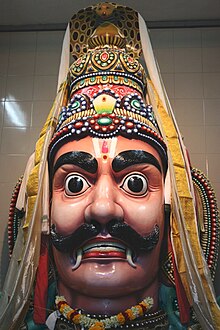
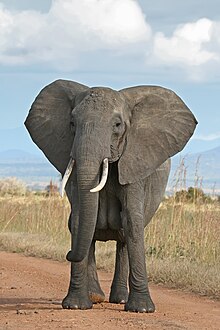

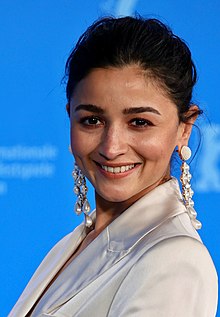

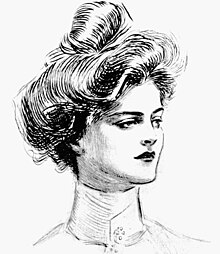


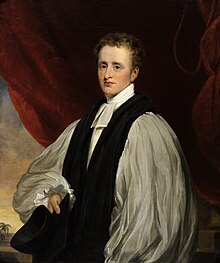














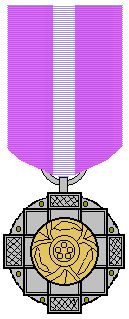




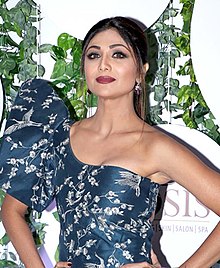


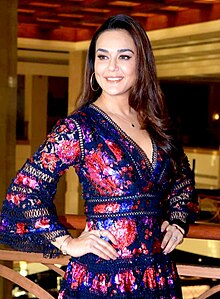
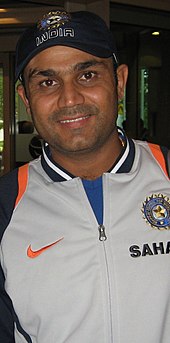
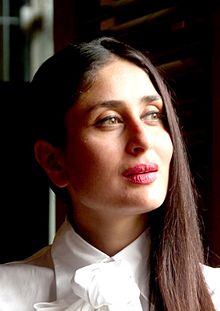











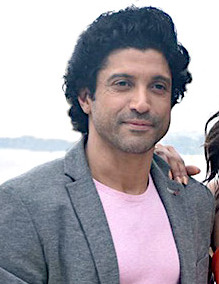

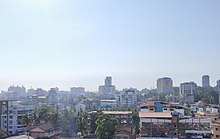















Recent Comments